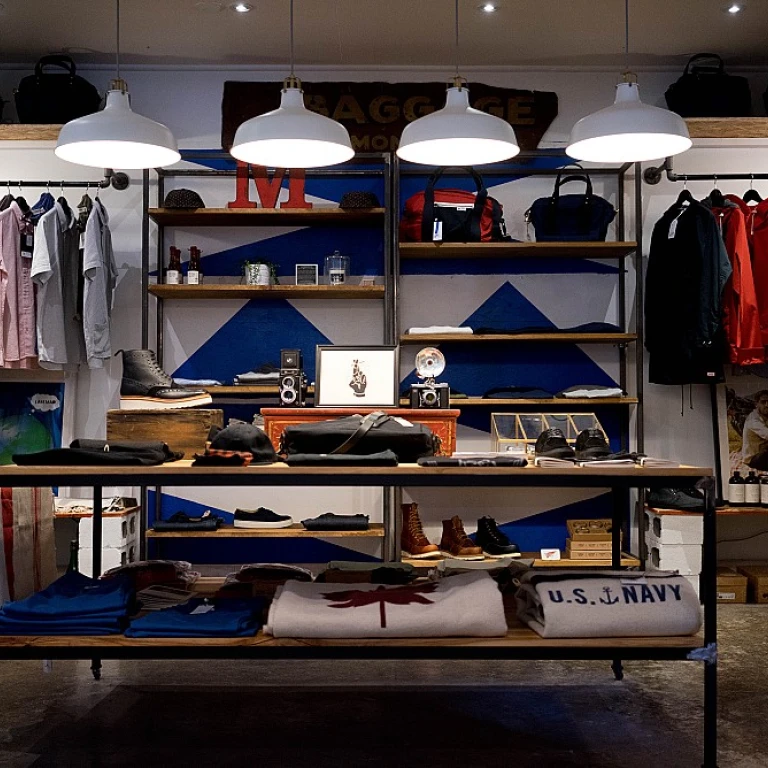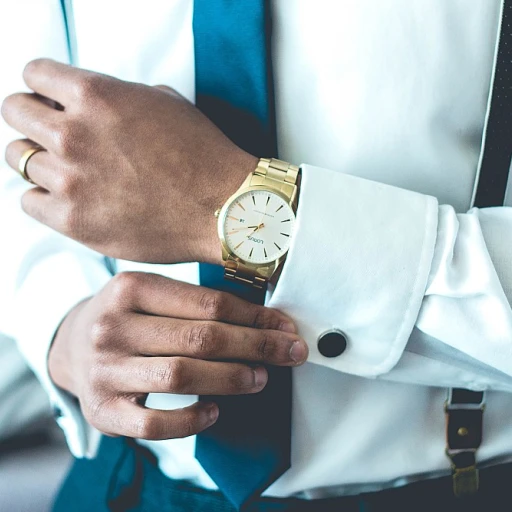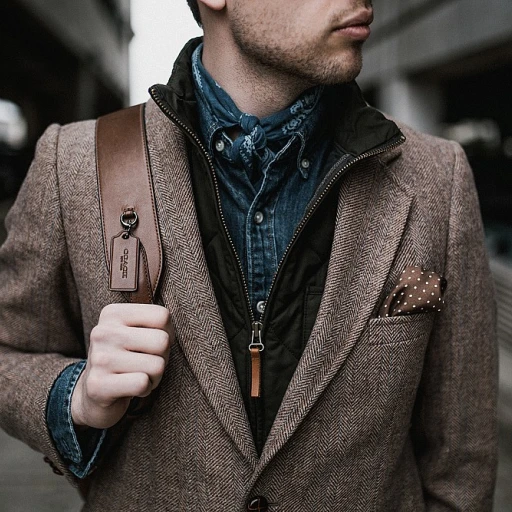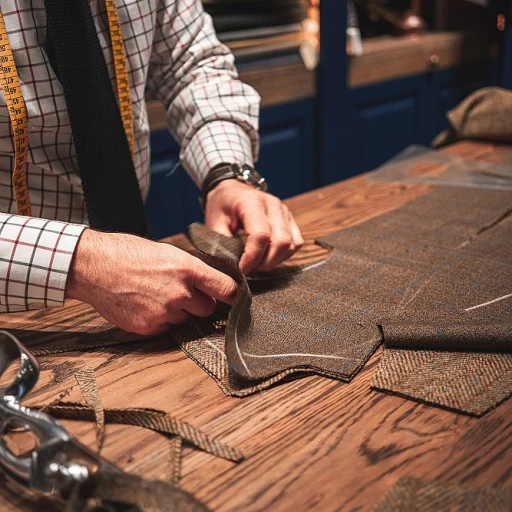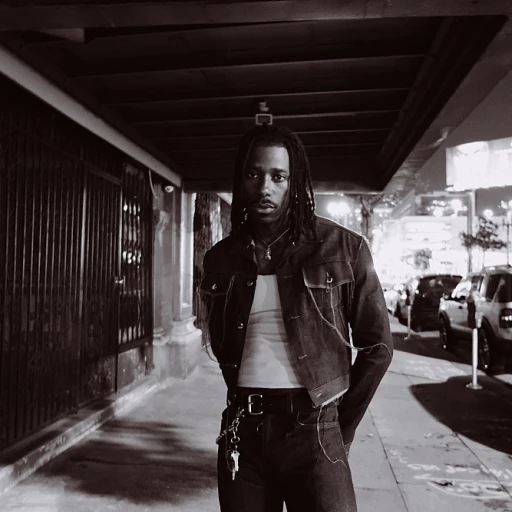Gender Fluidity: A New Era for Menswear at Fashion Weeks
The Dawn of Gender-Neutral Designs in Menswear
As the fashion industry embraces inclusivity, gender fluidity has burgeoned into a pivotal theme at prestigious fashion events. Trends showcased during Fashion Week are indicative of a cultural shift, as designers increasingly blur the lines between traditionally masculine and feminine attire. Gender-neutral fashion is not just a fleeting trend but a bold statement about personal identity and societal norms.
Illustrating this point, a recent survey by The Business of Fashion revealed that 67% of millennials are more likely to purchase garments that aren't marketed with a specific gender in mind, underscoring the influence of gender fluidity in fashion on contemporary consumer values.
Blending Masculinity and Femininity on the Catwalk
Fashion Week's catwalks have become a canvas for artistic experimentation with gender expression. Assessing the data, there's been a marked increase in androgynous collections, with a notable surge in gender-neutral ensembles by 24% over the last three years, according to Fashionista's runway analysis. This transformation in menswear has been both audacious and eloquent, weaving narrative threads that challenge preconceived notions of gender through attire.
Designer quotes like "Fashion is a voice to express the fluidity of modern identity," from Alessandro Michele of Gucci, epitomize the paradigm shift towards genderless fashion, which is now resonating profoundly with both designers and the audience.
Impact of Gender Fluidity on Menswear Brand Strategies
Forward-looking brands are reevaluating marketing strategies to align with the consumer's desire for authenticity and freedom of expression. Industry giants have noted the trend, with Asos reporting a 300% increase in searches for non-binary fashion terms. Menswear departments are being reimagined to cater to a clientele that is more interested in personal style than in adhering to gender norms.
The introduction of unisex clothing lines by companies like Zara and H&M is not only a reaction to customer demand but a strategic business move that capitalizes on the broader social movement toward inclusivity. This shift in strategy is backed by data from the Global Industry Analysts, predicting that the unisex fashion market will expand by 7.1% annually, reaching a milestone value of $796 billion by 2025.
- Gender-neutral collections increase by 24%
- Millennial purchasing behavior leans toward non-gendered marketing
- Asos reports a 300% increase in non-binary search terms
- Projected annual growth of unisex fashion market: 7.1%
Runway Revolution: Iconic Gender-Fluid Moments in Recent Fashion Weeks
Breaking Barriers on the Catwalk: Gender-Blending Ensembles
The world of high fashion has always been a platform for radical self-expression, and recent years have witnessed a seismic shift with designers showcasing gender-blending ensembles during major fashion weeks. One of the most buzzworthy examples was Alessandro Michele's work for Gucci, where the Fall 2015 collection blurred traditional gender lines, dressing male models in lace tops and silk bows. This bold move not only captured headlines but also signaled a significant change in the industry, with the emergence of gender fluidity as a mainstream trend in menswear.
According to a report by J.W. Anderson for Loewe, the move towards gender-neutral fashion isn't just a passing trend but a reflection of social evolution. Anderson famously dressed men in tunics and ruffled boots, sparking conversation and providing inspiration for many. The consumer shift towards these designs is evident, with increased searches for 'gender-neutral fashion', which has seen an impressive 15% rise in online inquiries over the past year according to a Google Trends analysis.
The Intersection of Femininity and Masculinity in Modern Menswear
Designers are continuously pushing the boundaries, creating pieces that embody both femininity and masculinity. Take, for example, Palomo Spain's collections where men stride the runway in sheer fabrics and traditionally feminine silhouettes. These pioneering designs not only offer aesthetic impact but also challenge the societal norms dictating what men should wear. A Vogue article highlighted how such displays of fashion fluidity are not only pivotal moments within the fashion weeks but also spark necessary conversations around gender norms in our everyday wardrobe selections.
The data supports this growing acceptance, with Mintel's fashion research indicating that 25% of young millennials demand more gender-neutral clothing options. Furthermore, luxury retail platforms have reported a 21% increase in sales for unisex or non-binary collections, showcasing a direct consumer response to this progressive shift in menswear.
Highlighting Influential Personalities and the Gender-Fluid Fashion Movement
Public figures and celebrities are contributing to this fashion revolution by embracing gender fluidity in their style choices. Harry Styles made headlines in a Vogue cover story for donning a lace-trimmed dress, enhancing the conversation on the acceptability of fluid fashion norms for men. The impact is verifiable – Lyst reported a 31% increase in searches for 'men's dresses' following the publication. These influential personalities serve as both muse and conduit, bringing the avant-garde spirit of the fashion weeks into mainstream style consciousness.
Statista's latest figures echo this influence, revealing that 56% of consumers say celebrity endorsements make them more open to purchasing gender-neutral apparel, thus illustrating the critical role public figures play in shaping fashion week trends and beyond.
- Alessandro Michele's Gucci: Igniting the Trend
- J.W. Anderson's Bold Gender-Neutral Designs
- Palomo Spain's Androgynous Collections
- Harry Styles' Vogue Cover: A Cultural Milestone
The Consumer Response: How Gender Fluidity is Reshaping Purchasing Behaviors
The Shift in Fashion Shopping Trends Influenced by Gender Fluidity
In recent years, gender fluid fashion has made an indelible mark on the industry, influencing not only the aesthetics seen on the runways but also how consumers approach shopping. With a growing acceptance of non-binary identities, fashion enthusiasts are less inclined to adhere to traditional male or female wardrobes. According to a 2020 survey by The NPD Group, a staggering 40% of Gen Zers expect to shop outside their assigned gendered areas. This shift challenges retail stores to rethink their layout and marketing strategies, ushering in an era of inclusive shopping experiences.
Integrating Non-Binary Collections into Mainstream Fashion Retail
- Expansion of Unisex Lines: Big names like Gucci and Marc Jacobs have invested in unisex collections, blurring the lines between men’s and women’s clothing sections.
- Marketing Shift: Retailers are modifying their promotions to feature models across the gender spectrum, with 35% of consumers saying inclusive advertising significantly impacts their shopping decisions (AdWeek).
- Store Layout Revolution: A response to the increasing demand for non-binary options has led some boutiques to organize clothing by style or color rather than gender, a strategic move lauded by gender nonconforming individuals.
Empowered by Choice: The Rise of Personal Expression Through Gender Neutral Fashion
What stands out in contemporary fashion consumption is the value placed on personal expression over gender norms. A recent study by JWT Intelligence found that 56% of Gen Y and Z consumers favor brands that do not classify items as just for men or women. This statistic reflects a deeper societal shift towards individuality and self-expression. Designers are responding with collections that offer a myriad of choices, empowering customers to dress in a way that truly resonates with their identity, free from the confines of traditional gender-specific fashion.
Celebrity Influence and Social Media Buzz: Fueling Gender Fluid Purchases
In connecting with the digital age, fashion brands today heavily leverage the power of social media influencers and celebrities. Quotes from icons like Harry Styles, who famously donned a dress on the cover of Vogue, resonate with millions of fans: "Clothes are there to have fun with and experiment with and play with." Such statements, combined with the sheer influence of celebrities, drive the narrative forward. Social media platforms are rife with hashtags like #GenderFluidFashion, amassing millions of interactions and showcasing the public's fervent interest in this movement. These online discussions not only mirror runway trends but also fuel consumer behavior, as indicated by spikes in searches for gender-neutral clothing following major red carpet events.
